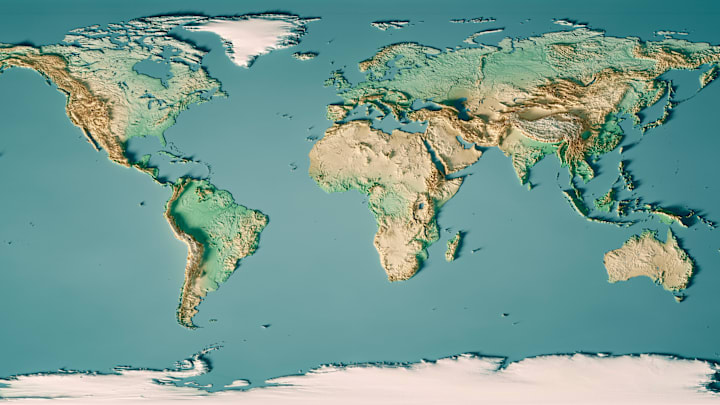It seems like “How many oceans are there?” would be a question with a one-word answer—and it is. But the word itself depends on whom you ask.
In the past, most oceanographic organizations recognized four distinct oceans. There’s the Atlantic, east of North and South America and west of Europe and Africa; the Pacific, east of Asia and Australia and west of the Americas; the Indian, south of Asia and between Africa and Australia; and the Arctic, located along the northernmost regions of North America, Europe, and Asia.
According to that model, the waters just north of Antarctica are the southernmost parts of the Atlantic, Pacific, and Indian Oceans. But since at least the early 18th century, some geographers have referred to those waters as a separate ocean: the Southern Ocean, also known as the Antarctic Ocean. In 1999, the U.S. Board on Geographic Names officially started doing so, too, choosing Southern Ocean over Antarctic Ocean. The next year, the International Hydrographic Organization (IHO), which is responsible for surveying and charting the world’s bodies of water, followed suit.

At the time, 68 countries were members of the IHO (a number that has since grown to 97), and the update rippled through various institutions across the globe. There is, however, still a lack of consensus regarding the specific borders of the Southern Ocean, and not everyone acknowledges it as its own ocean. National Geographic just made the change in June 2021.
But as all the oceans are connected, it would also be correct to say that there’s really only one ocean. This “global ocean” or “world ocean” covers about 71 percent of the Earth’s surface.
Sea vs. Ocean: What’s the Difference?
Seas connect to the global ocean, too. As the National Oceanic and Atmospheric Administration’s National Ocean Service explains, a sea is essentially a smaller body of saltwater “located where the land and ocean meet.” There is one sea that doesn’t hug land: the Sargasso Sea, a portion of the Atlantic Ocean that has no land boundaries, as its borders are all ocean currents. Other so-called “seas” technically don’t qualify as seas because they don’t connect to oceans—the Caspian Sea and the Dead Sea, for example, are both widely considered lakes.
